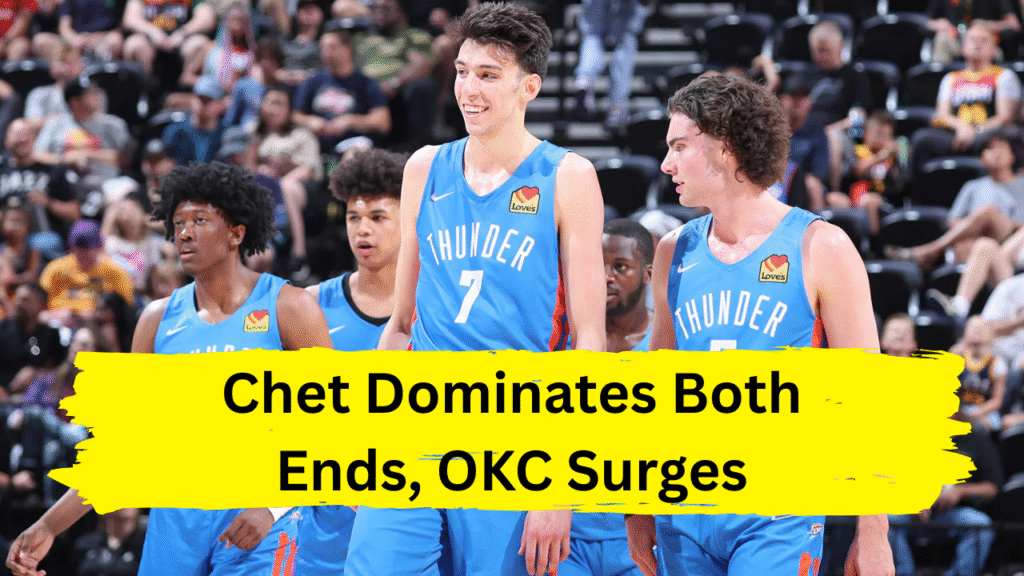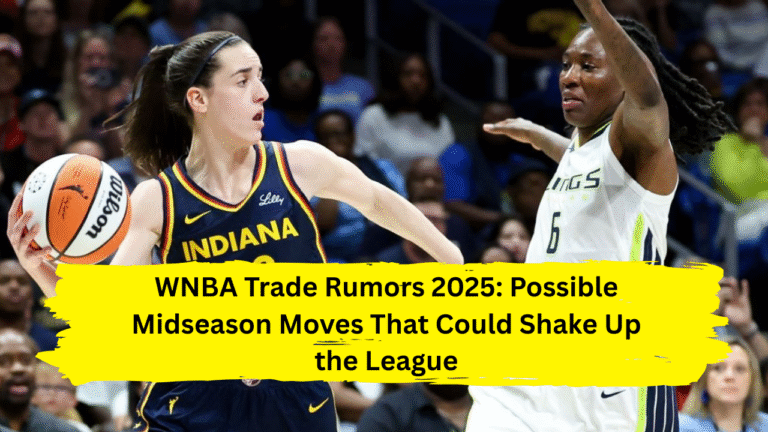
In the high-stakes crucible of the NBA playoffs, where legends are forged and narratives crystallize, Chet Holmgren has emerged as Oklahoma City’s silent assassin. His combination of defensive mastery, offensive efficiency, and clutch playmaking has become the Thunder’s secret weapon, propelling them to the brink of the NBA Finals. From swatting game-saving blocks to throwing down momentum-shifting dunks, Holmgren’s two-way dominance is rewriting the script for modern big men—and leaving opponents scrambling for answers.
The Defensive Anchor: A Rim Protector Redefining Possibilities
At 7’1” with a wingspan that seems to stretch across the court, Holmgren’s defensive instincts have turned the Thunder into a fortress. In Game 4 of the Western Conference Finals against Minnesota, with OKC clinging to a five-point lead in the final minute, Holmgren delivered a signature moment. Jaden McDaniels, driving hard to the basket with a spin move, appeared poised to cut the deficit. But Holmgren, sliding laterally with the grace of a guard, timed his leap perfectly to reject McDaniels’ layup without fouling, sealing the Thunder’s 128-126 victory .
This play wasn’t an anomaly. Holmgren averaged 2.2 blocks per game during the regular season and has elevated his rim protection in the playoffs, including a five-block showcase against Memphis in the second round where he chased down Santi Aldama for a chase-down block that electrified the crowd . His ability to guard multiple positions—from Rudy Gobert’s post-ups to Anthony Edwards’ drives—has made him indispensable in OKC’s switch-heavy scheme. As teammate Shai Gilgeous-Alexander noted, “He affects the game at such a high level. We rarely call plays for him, but he’s always making winning plays” .
Offensive Versatility: More Than Just a Spacer
Holmgren’s offensive game defies traditional center archetypes. While he’s a reliable floor-spacer (shooting 37.9% from three during the regular season), his true value lies in his off-ball movement and timing. In Game 1 of the Western Conference Finals, with OKC’s offense stalling, Holmgren ignited a fourth-quarter surge by drilling a catch-and-shoot three and cutting baseline for a thunderous dunk off a feed from Cason Wallace . These plays, executed without a single play called for him, underscored his basketball IQ and adaptability.
His synergy with Gilgeous-Alexander and Jalen Williams has been pivotal. In Game 4 against Minnesota, Holmgren scored nine of his 21 points in the fourth quarter, including putbacks and pick-and-roll finishes that exploited Minnesota’s small-ball lineups . Despite limited touches, he shot 64.3% from the field in that game, showcasing his efficiency in tight spaces .
The X-Factor in Critical Moments
Holmgren’s impact isn’t confined to box scores; it’s etched in the margins of momentum. Against Memphis, his chase-down block on Aldama—a play that began with him celebrating a putback and ended with a full-speed sprint to erase a transition layup—epitomized his relentless motor . Similarly, his four offensive rebounds in Game 4 against Minnesota created second-chance opportunities that kept OKC’s offense afloat during tense moments .
His resilience is equally remarkable. After missing his rookie season with a foot injury and 50 games this year due to a pelvic fracture, Holmgren has defied expectations. “It’s gone under the radar how hard it is to integrate into a 68-win team after sitting out,” Gilgeous-Alexander admitted, praising Holmgren’s selflessness . This adaptability has allowed him to thrive in a role that demands both sacrifice and spontaneity.
A New Blueprint for Modern Bigs
Holmgren’s game is a fusion of old-school grit and new-age skill. He protects the rim like a traditional center but moves with the fluidity of a wing. He spaces the floor but dominates the offensive glass. In a league increasingly defined by positionless basketball, Holmgren is a prototype—a player who can guard all five positions, stretch the floor, and finish at the rim.
As OKC advances, Holmgren’s two-way brilliance is forcing a reckoning. Is he the ultimate role player or a future superstar in disguise? For now, the answer lies in the wins he’s engineered. Whether it’s a game-sealing block, a timely dunk, or a hustle play that doesn’t make the highlight reel, Holmgren’s fingerprints are all over the Thunder’s historic run. And in a league obsessed with star power, his quiet dominance is a reminder that greatness doesn’t always need the spotlight—it just needs to win.
In the end, Chet Holmgren isn’t just a player; he’s a philosophy. A testament to how defense, intelligence, and unselfishness can elevate a team to heights even its MVP can’t reach alone. And as the Thunder march closer to a championship, his two-way mastery isn’t just shaping games—it’s redefining what it means to be a modern NBA big man.




